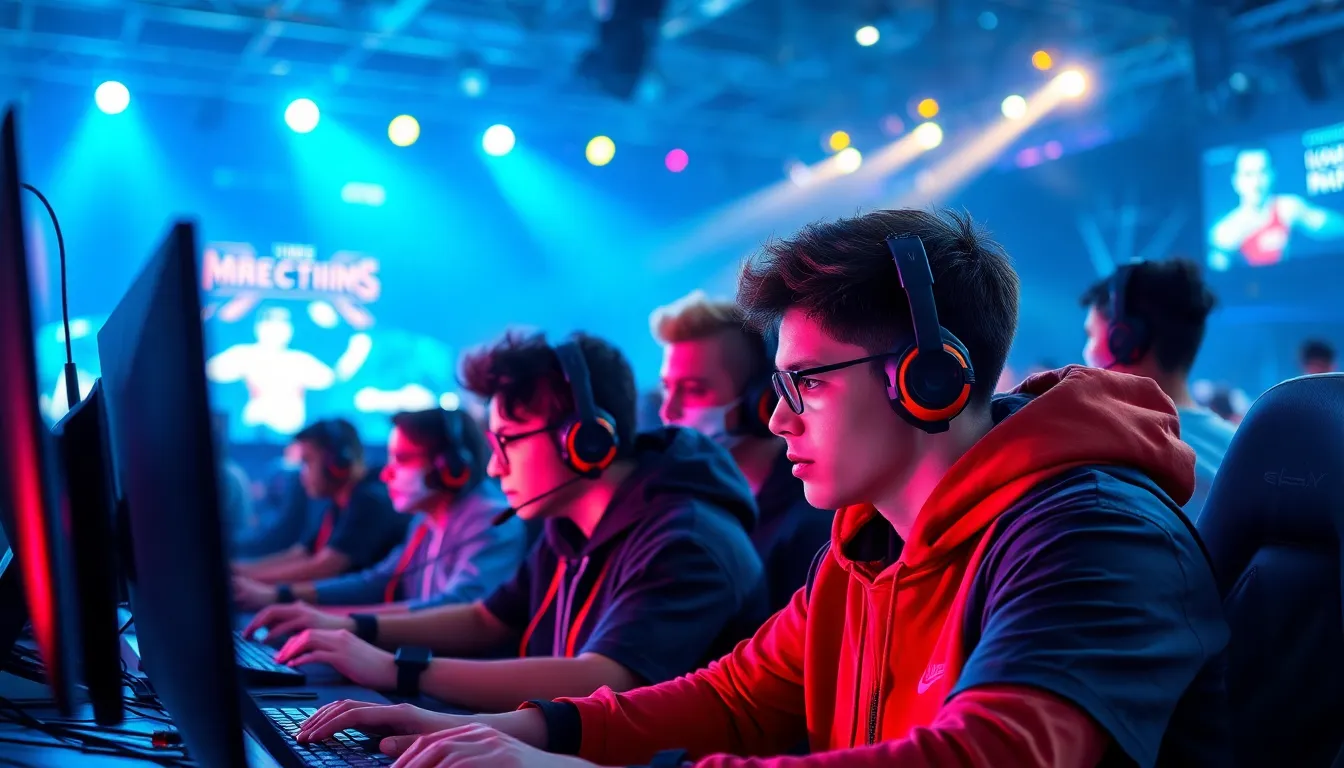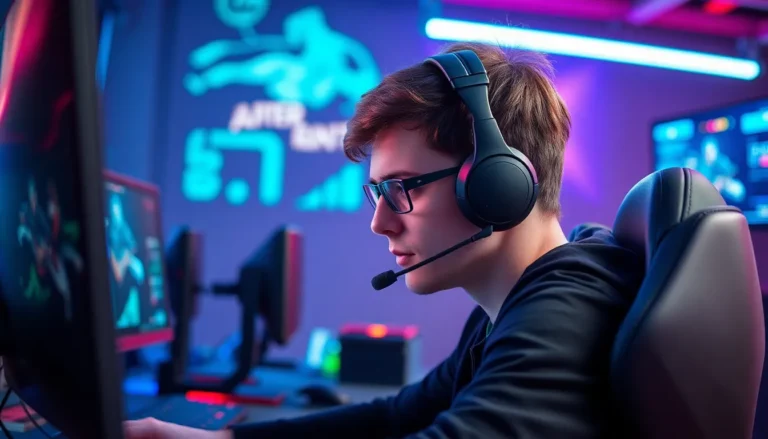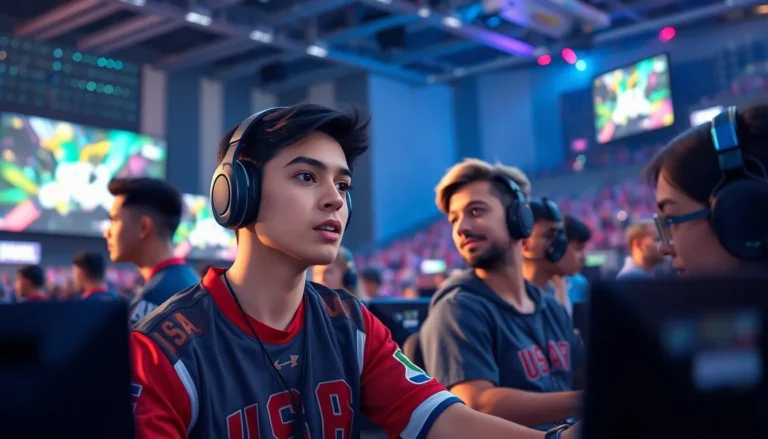As the world dives deeper into the digital age, a heated debate rages on: are esports truly sports? Picture this—athletes glued to their screens, fingers dancing over keyboards, and sweat dripping from their brows as they strategize their way to victory. It might not involve a ball, but the intensity is real.
While some traditionalists scoff at the idea of competitive gaming being classified as a sport, others argue that the skill, teamwork, and mental agility required are just as demanding as any physical sport. So grab your controller and settle in; it’s time to explore whether clicking buttons can hold a candle to dribbling basketballs and scoring touchdowns.
Are Esports Sports
The classification of esports as sports sparks ongoing debate. Many see competitive gaming as a showcase of skill, strategy, and teamwork, much like traditional sports. Players engage in intense, fast-paced environments, requiring quick reflexes and sharp decision-making abilities.
Several characteristics align esports with conventional sports. High levels of coordination frequently appear in both arenas, demonstrating the necessity for precise movements and split-second timing. Mental endurance also plays a crucial role, as gamers need to maintain focus during long competitions.
Critics argue esports lack physical activity, suggesting that traditional sports inherently require bodily exertion. This viewpoint highlights a significant distinction between gaming and physical sports. However, supporters counter that esports involve competition, rules, and organized events typical of recognized sports.
Data reinforces this perspective. According to a 2022 report by Newzoo, the global esports audience reached 532 million, demonstrating immense popularity. Events like the League of Legends World Championship and The International, known for their large prize pools and viewership numbers, resemble high-stakes sports tournaments.
Conversations surrounding esports also emphasize community and fandom. Fans participate in viewing parties and tournaments, mirroring support seen in traditional sports. This cultural aspect fosters camaraderie and a sense of belonging among enthusiasts.
Classifications may vary, yet the passion and dedication among esports players parallel that of traditional athletes. As the landscape continues to evolve, it’s essential to consider these elements when evaluating whether esports fit the definition of sports.
The Definition of Sports

The ongoing debate about the classification of esports raises important questions regarding what constitutes a sport. Various definitions exist, but most emphasize competition, skill, and organization.
Traditional Sports Characteristics
Traditional sports typically encompass several key characteristics. Players demonstrate physical prowess and maintain stamina through rigorous training. The presence of competition remains a central element, with teams or individuals striving for victory. Rules govern gameplay, ensuring that matches operate fairly and consistently. Skill development stands as a critical factor, with athletes honing techniques over time. Fan engagement contributes significantly, as spectators gather to support their teams.
The Evolution of Sports
The concept of sports evolves constantly, mirroring societal changes. Early games focused on physical strength and endurance, gradually incorporating elements of strategy and teamwork. Over time, sports diversified, accommodating various interests and abilities. Technological advancements introduced new forms of competition, such as esports. As audiences shift, the rise of digital platforms reshapes the sporting landscape. Acceptance of diverse formats, including virtual competitions, broadens the definition of sports. This evolution showcases an expanding understanding of what can qualify as sport in contemporary culture.
Overview of Esports
Esports encompasses various competitive gaming experiences that showcase skill and strategy. These events draw millions of viewers worldwide, highlighting their significance in modern culture.
Popular Game Genres
Game genres that dominate the esports landscape include multiplayer online battle arenas (MOBAs), first-person shooters (FPS), and real-time strategy (RTS) games. Titles like League of Legends, Dota 2, and Counter-Strike: Global Offensive represent these categories. Each genre requires distinct skills, encouraging a diverse range of players to compete. Multiplayer formats, in particular, emphasize teamwork and strategy, resembling traditional team sports. Spectators enjoy watching these genres due to their fast-paced action and intense competition.
The Competitive Scene
The competitive scene in esports features numerous tournaments and leagues that operate year-round. Each event attracts diverse participants, offering substantial prize pools and sponsorships. Major tournaments, such as the League of Legends World Championship, draw millions of viewers and showcase top talent. Players often train rigorously, similar to traditional athletes, focusing on improving their skills and teamwork. This dedication reflects a commitment to excellence that resonates within the gaming community. As the esports scene continues to grow, it establishes itself as a legitimate aspect of competitive entertainment.
Arguments For Esports Being Sports
The classification of esports as sports includes several compelling arguments. Key elements like skill and strategy play pivotal roles in this ongoing debate.
Skill and Strategy
Esports demand high levels of skill and strategic thinking from players. Players must invest countless hours mastering their chosen game, similar to traditional athlete training regimens. Quick reflexes, precise hand-eye coordination, and problem-solving abilities frequently determine the outcome of matches. Players analyze opponents’ tactics and adapt strategies in real-time to gain advantages. Titles like Dota 2 and League of Legends showcase intricate strategies that require extensive teamwork and communication. Mental endurance remains crucial during lengthy competitions, where concentration directly impacts performance. Many factors combine to create a highly competitive environment that mirrors traditional sports in complexity and intensity.
The Role of Competition
Competition forms the backbone of esports, just as it does in physical sports. Esports events feature structured tournaments with clear rules, regulations, and objectives. Many prominent organizations, such as ESL and DreamHack, host annual competitions that draw significant participation and substantial prize pools. Competitive gaming fosters a sense of rivalry akin to that found in traditional sports, engaging players and fans alike. Live audiences at events mirror the atmosphere seen in conventional sporting arenas, especially during high-stakes matches. The need for teamwork and collaboration among players creates dynamics that resemble team sports. Esports leagues, such as the Overwatch League, emphasize organized play and fan engagement, further solidifying their status in the competitive landscape.
Arguments Against Esports Being Sports
Critics highlight significant distinctions between esports and traditional sports, often focusing on physical elements and cultural views.
Physicality and Fitness
Physical activity remains a cornerstone of traditional sports, where athleticism and fitness play crucial roles. Many argue that esports lack the required physical exertion, rendering them less valid as sports. Competitive gaming demands mental sharpness and reflexes, but it rarely involves extensive cardiovascular activity. Critics contend that while players display skills, the absence of physical fitness undermines comparisons to athletes in sports like basketball or soccer. Traditional sports stress endurance, strength, and agility, contrasting significantly with the sedentary nature of gaming. In essence, this absence of physicality leads opponents to categorize esports differently from conventional sports.
Cultural Perceptions
Cultural perspectives often shape views on what qualifies as a sport. Traditionalists cling to established definitions, emphasizing competition distinguished by physical prowess. Gaming communities tout their own culture, featuring fans, tournaments, and events, yet mainstream acceptance remains inconsistent. Many still view esports as mere entertainment rather than legitimate sports. Critics argue the perception of gaming as a pastime prevents full recognition of its competitive elements. This cultural divide perpetuates skepticism, leading some to dismiss esports in favor of traditional athletic endeavors. Without broader acceptance, esports struggle to bridge the gap elucidating their status within the world of sports.
Conclusion
The debate over whether esports should be classified as sports continues to evolve. As competitive gaming gains recognition for its strategic depth and skillful execution, many are beginning to appreciate its similarities to traditional sports. The growing audience and organized tournaments reflect a cultural shift that embraces diverse forms of competition.
While physicality remains a key distinction, the mental agility and teamwork required in esports cannot be overlooked. As society adapts to new forms of entertainment and competition, the lines between traditional sports and esports may blur further. Ultimately, the passion and dedication of esports players deserve acknowledgment in the broader sports landscape.




